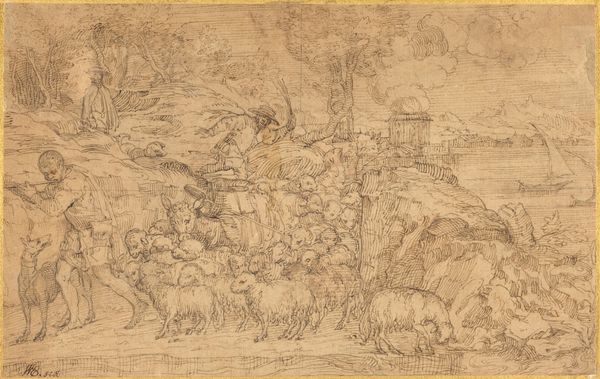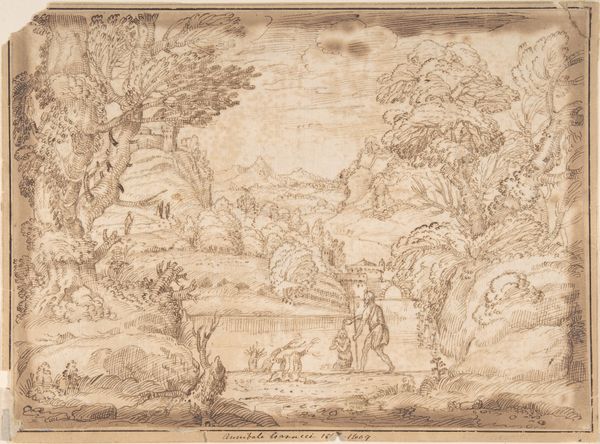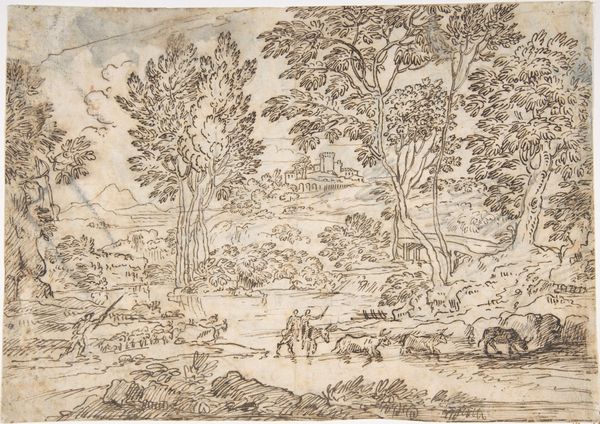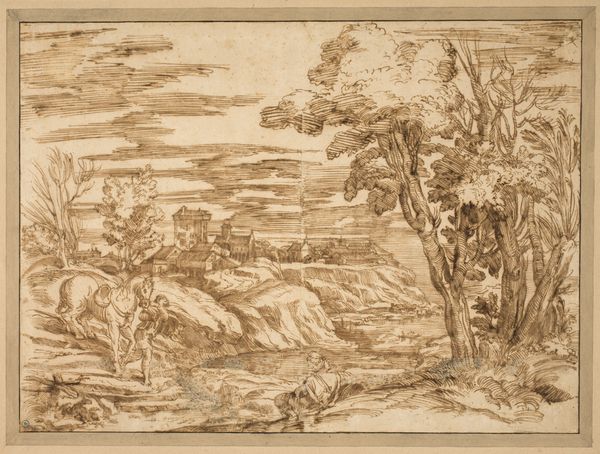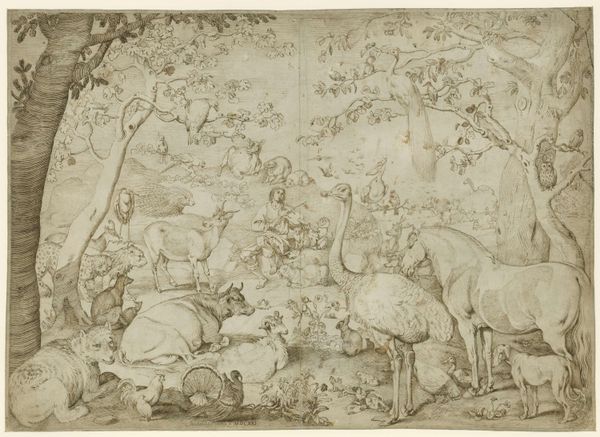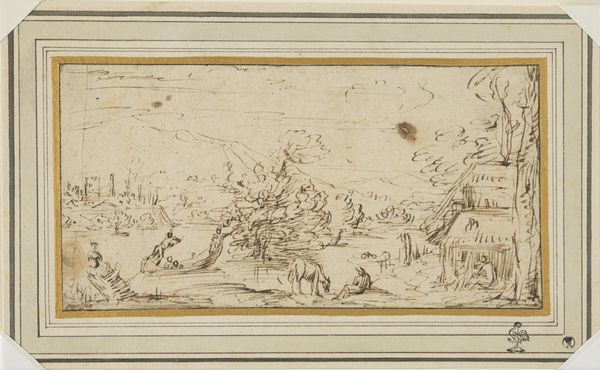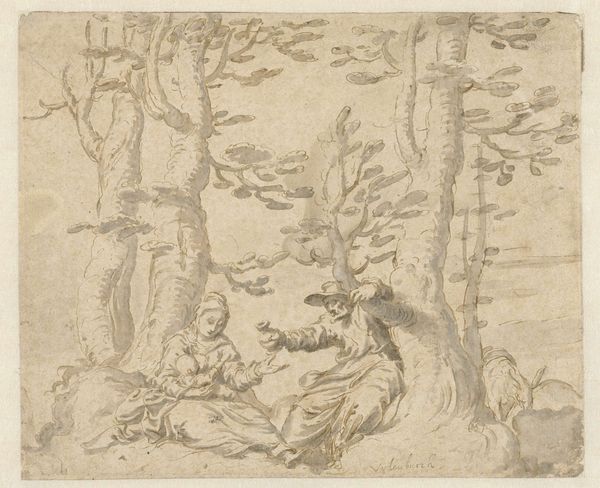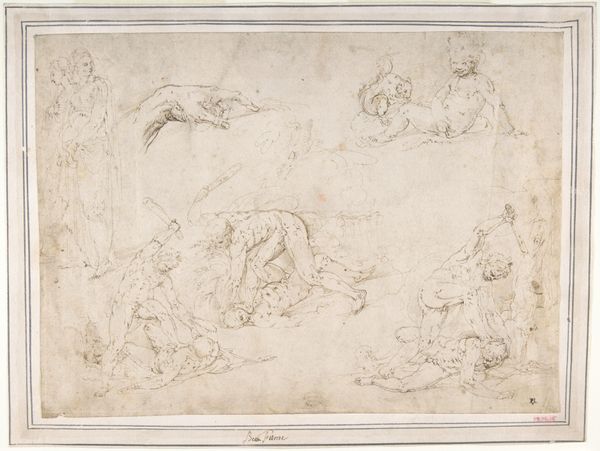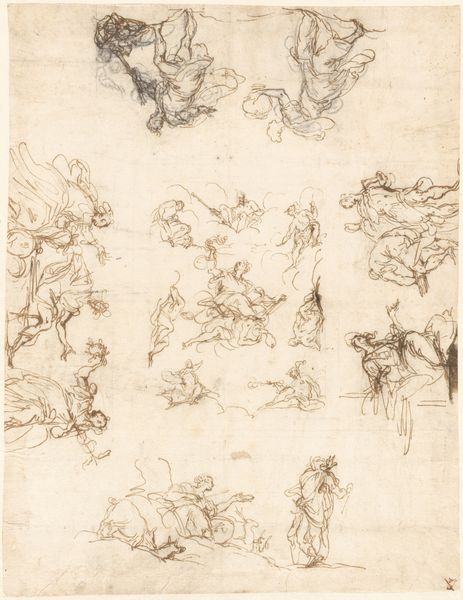
drawing, print, paper, ink
#
drawing
#
garden
#
ink painting
#
animal
# print
#
landscape
#
figuration
#
paper
#
11_renaissance
#
ink
#
horse
#
genre-painting
#
history-painting
Dimensions: 7 3/4 x 9 3/4 in. (19.7 x 24.8 cm)
Copyright: Public Domain
Editor: This drawing, "Garden of Eden; Creation of the Animals," from the 16th century, is an ink on paper print currently at the Metropolitan Museum of Art. It feels like a study or preparatory sketch, especially with that visible grid. What do you see in the ways this was made? Curator: What jumps out at me is the artist’s engagement with readily available materials – paper, ink, the very accessible printing press. This wasn't about rare pigments or precious metals. Instead, it’s a demonstration of how easily religious narratives could be circulated through reproducible means. Consider, too, how the grid itself, almost like a weaver’s guide, might have been crucial to mass production. How does that inform the reception of the artwork for you? Editor: It makes me think about how this image would reach a much broader audience than, say, a painting in a noble's collection. It’s interesting how accessible materials democratized the religious message, or at least made it more widely available. Curator: Exactly. And note how the skill involved wasn't necessarily about unique artistic genius, but the clever and efficient manipulation of materials. It's a form of skilled labor. Do you think that changes the artistic value in any way? Editor: It sort of shifts the focus. It's less about the artist's singular vision, more about their craft and how that craft intersects with the cultural need to disseminate these biblical stories. Almost like propaganda... Curator: In a way, yes! It highlights the function and purpose of this drawing as an object within a wider social and economic system. Ultimately, it wasn't just art; it was a product of its time, revealing so much about material culture and devotional practices of the 16th century. Editor: I guess thinking about the ink, the paper, and the printing process tells as much of a story as the animals themselves.
Comments
No comments
Be the first to comment and join the conversation on the ultimate creative platform.
